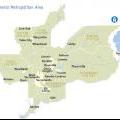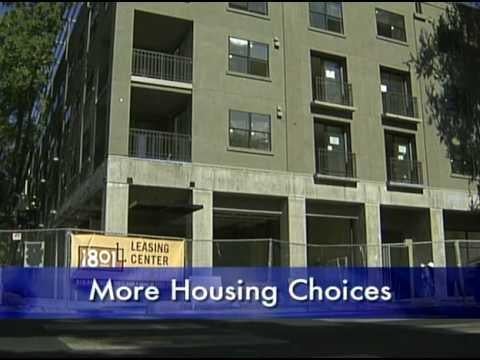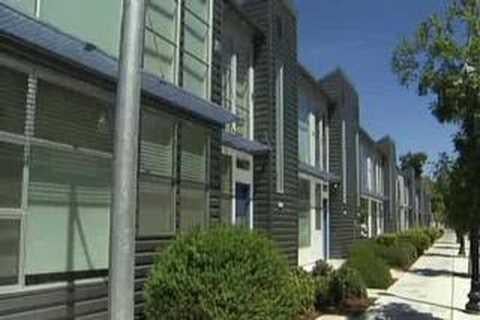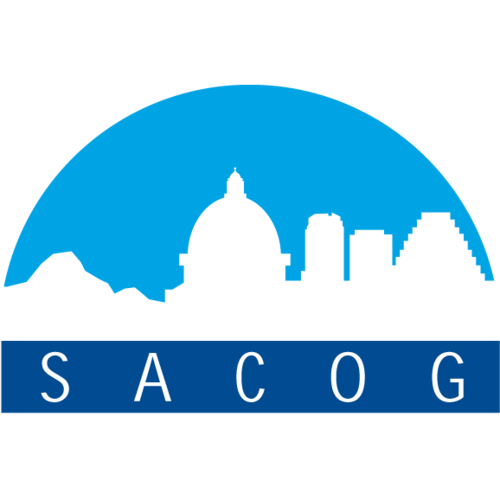Sacramento Area Council of Governments (SACOG)
About SACOG
The Sacramento Area Council of Governments (SACOG) is an association of local governments in the six-county Sacramento Region.
SACOG provides transportation planning and funding for the region and serves as a forum for the study and resolution of regional issues. In addition to preparing the region’s long-range transportation plan, SACOG approves the distribution of affordable housing in the region and assists in planning for transit, bicycle networks, clean air and airport land uses.
Members: Counties of El Dorado, Placer, Sacramento, Sutter, Yolo and Yuba; Cities of Auburn, Citrus Heights, Colfax, Davis, Elk Grove, Folsom, Galt, Isleton, Lincoln, Live Oak, Loomis, Marysville, Placerville, Rancho Cordova, Rocklin, Roseville, Sacramento, South Lake Tahoe, West Sacramento, Wheatland, Winters, Woodland and Yuba City
Transportation and SB 375
Metropolitan Transportation Plan/Sustainable Communities Strategy
The Metropolitan Transportation Plan/Sustainable Communities Strategy (MTP/SCS) is a long-range plan for transportation in the Sacramento region built on the Blueprint Project (2004). Since the last MTP (2008), California adopted Senate Bill 375, which requires a Sustainable Communities Strategy to be added to transportation plans across the state.
The SCS is a plan to meet the region’s greenhouse gas emissions reduction target (7 percent reduction by 2020 and 16 percent reduction by 2035), while taking into account regional housing needs, transportation demands, and protection of resource and farm lands based on the best forecast of likely land use patterns across all 28 local jurisdictions.
SACOG adopted the current combined Metropolitan Transportation Plan/Sustainable Communties Strategy in April 2012.
Public Participation Plan
SACOG is committed to effectively involving the public in its transportation planning and programming activities. As part of the Metropolitan Transportation Plan 2035, SACOG developed a new Public Participation Plan. The Public Participation Plan has three purposes:
- To inform the public about regional transportation issues.
- To establish the process that allows the public to provide input.
- To identify how SACOG’s transportation related programs reflect the region’s priorities.
SACOG’s Public Participation Plan was adopted in June 2011.
Housing
In September 2012, the SACOG Board approved the 2013-21 Regional Housing Needs Plan, the final stage in adopting 2013-21 Regional Housing Needs Allocation (RHNA), a state requirement to determine the number of housing units cities and counties must plan for in their housing element updates. The most important component of the Plan is that it distributes the allocations housing units in each of four income categories to each city and county in the six-county region, including the Tahoe Basin portions in El Dorado and Placer Counties.
The region’s total housing allocation is 104,970 units for the plan period which covers January 1, 2013 through October 31, 2021. With the adopted Plan, the allocations take effect and the cities and counties must prepare and approve their housing element updates by October 31, 2013.
Other Programs and Projects
Bicycle and Pedestrian Planning
SACOG serves as a forum for bicycle and pedestrian planning activities throughout the region. Staff makes its expertise available to partner organizations and groups to support their bicycle and pedestrian planning efforts. The SACOG Bicycle and Pedestrian Advisory Committee functions as an advisory committee to the SACOG Board of Directors on the non-motorized content of plans and on priorities for non-motorized projects.
Regional Blueprint Plan
 The Preferred Blueprint Scenario was adopted by the SACOG Board of Directors in December 2004. Presented as an alternative to low-density development, the scenario is a way to formulate a vision of growth in the region that promotes compact, mixed-use development that works together with integrated transit choices.
The Preferred Blueprint Scenario was adopted by the SACOG Board of Directors in December 2004. Presented as an alternative to low-density development, the scenario is a way to formulate a vision of growth in the region that promotes compact, mixed-use development that works together with integrated transit choices.
Rural-Urban Connections Strategy
The Rural-Urban Connections Strategy (RUCS) is a look at the region’s growth and sustainability objectives from a rural perspective. In the same way that Blueprint is an economic development strategy for urban areas, the RUCS project is an economic and environmental sustainability strategy for rural areas.
Videos
| Using infill to manage growth and fight sprawl in Sacramento |
 |
| Managing travel congestion in Sacramento |
 |
| Source: SACOG’s YouTube Channel |





